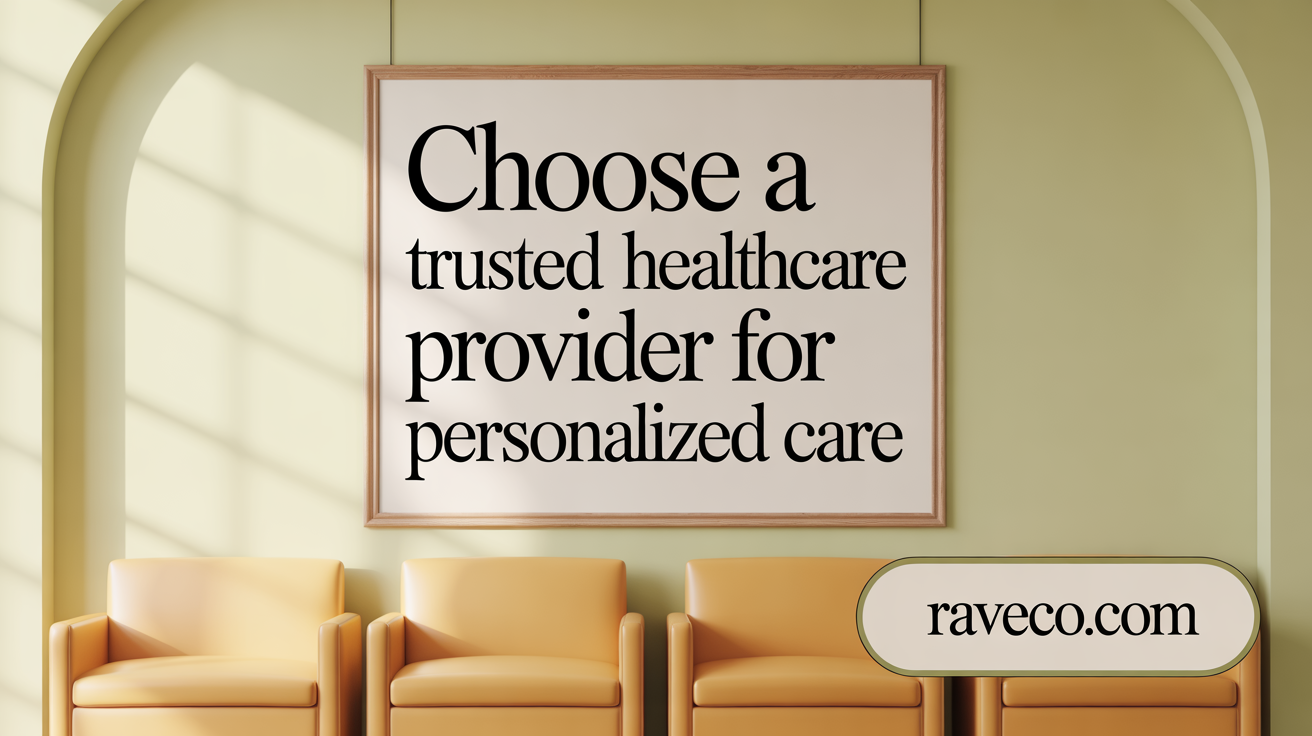Recognizing the Right Time to Address Female Infertility: Key Indicators and Expert Care in Queens

Why the Choice of Your Obstetrician Matters
Choosing your obstetrician isn't just about preference—it's a pivotal decision that can shape every aspect of your pregnancy, labor, and delivery. Delivering with your own doctor fosters trust, personalized care, and ensures that your voice is heard during one of the most important moments in life. This article explores why building a strong relationship with your OB, the role of hospital-based specialists, and effective communication can transform your childbirth experience into one that is safe, supported, and empowering.
Building Trust Through Strong Patient-Provider Relationships

How does having a strong patient-provider relationship impact pregnancy and delivery outcomes?
A solid relationship between patients and their healthcare providers plays a crucial role in ensuring positive pregnancy and delivery outcomes. When women feel respected, listened to, and understood, they are more likely to communicate openly about their concerns, preferences, and questions. This openness promotes shared decision-making, increasing the likelihood that care aligns with both medical best practices and the patient’s personal wishes.
Effective communication fosters trust, which can reduce anxiety and emotional stress during pregnancy. Women who trust their providers are more engaged in their prenatal care, follow medical advice, and adhere to treatment plans. Such engagement leads to healthier behaviors, earlier reporting of complications, and a more proactive approach to managing risks.
Trusting relationships can also buffer the effects of unforeseen complications or adverse events. Patients tend to cope better emotionally when they believe their providers are competent and compassionate. As a result, overall emotional well-being improves, which has been linked to better physical outcomes, such as reduced preterm birth rates and smoother labor experiences.
In summary, a strong, respectful, and empathetic patient-provider relationship not only enhances communication but also improves health outcomes and emotional satisfaction. This foundation provides the support women need for a safer and more positive pregnancy and childbirth experience.
Communication: The Cornerstone of Safe Pregnancy and Delivery

Why is effective communication between doctors and patients important during pregnancy and childbirth?
Effective communication plays a vital role throughout pregnancy and delivery. It ensures that women understand their health status, the choices available, and the medical procedures involved. When healthcare providers communicate clearly and empathetically, patients are more likely to feel reassured, trusting their providers and the care they receive.
A strong doctor-patient relationship built on open dialogue encourages women to share important details about their medical history, social factors, and concerns. This information is crucial for managing risks and planning appropriate care, such as discussing birth plans or addressing emotional needs.
Shared decision-making is facilitated through transparent conversations about the risks, benefits, and alternatives of treatments, including cesarean deliveries or labor induction. When women are involved in decisions, their satisfaction and adherence to care recommendations increase.
Proper communication also helps reduce anxiety, which can negatively impact labor and delivery outcomes. Women who feel heard and respected are more likely to stay calm and actively participate in their care.
Moreover, effective communication addresses disparities in maternal healthcare by mitigating biases and ensuring that all women, regardless of background, feel included and respected. Building trust through empathetic, culturally sensitive interaction leads to better adherence to health advice and healthier pregnancies.
Ultimately, good communication improves safety, fosters emotional well-being, and ensures that both mother and baby have the best possible outcomes during this critical period.
Choosing Your Doctor: The Advantages of Dedicated Obstetric Care

What are the advantages of trusting and choosing a dedicated obstetrician or doctor for childbirth?
Opting for a dedicated obstetrician brings many benefits that can positively influence your childbirth experience. With a consistent healthcare provider, you receive personalized care tailored specifically to your health history, pregnancy needs, and birth preferences. This relationship promotes trust and effective communication, making it easier to discuss concerns, ask questions, and make informed decisions.
A dedicated obstetrician closely monitors your pregnancy, quickly detects potential complications, and manages emergencies efficiently. Their ongoing involvement allows for continuous postpartum support, helping you recover physically and emotionally. Being familiar with your unique medical background ensures that care is proactive and tailored, providing reassurance during a critical life event. Overall, choosing a committed obstetrician provides safety, personalized attention, and emotional comfort throughout your pregnancy journey.
Can you choose which healthcare provider delivers your baby?
Most women have the ability to select their prenatal care provider, such as an obstetrician, family practice doctor, or certified nurse-midwife. However, who actually delivers the baby can depend on several factors, including hospital policies, risk levels, and the provider’s availability.
In low-risk pregnancies, many women opt for a midwife or family doctor, while high-risk cases often involve obstetricians or specialists in maternal-fetal medicine. Your choice of delivery setting—hospital, birthing center, or home—also affects your options. It’s crucial to clarify your preferences early on and to communicate your birth plan with your healthcare providers.
Understanding the practice style of your chosen provider and reviewing hospital policies will ensure your birth experience aligns with your wishes, safety, and medical needs. Flexible planning and open communication help you navigate your options and select the healthcare team best suited for your delivery.
How a dedicated doctor improves labor and delivery experiences
A specialist who is dedicated to obstetrics ensures that your labor and delivery are managed with expertise and compassion. Their continuous monitoring during labor can detect early signs of complications, enabling prompt intervention.
Having a trusted obstetrician also means you are more likely to have supportive, personalized care, which can reduce anxiety and enhance satisfaction. They help you understand medical procedures, discuss pain management options, and respect your birth preferences.
Furthermore, their familiarity with your medical history enhances decision-making, especially in emergencies. If complications arise, they can act swiftly to ensure safe outcomes for both mother and baby. Overall, a consistent, dedicated obstetrician nurtures a trusting environment that prioritizes safety while respecting your individual birth plan.
The Vital Role of OB Hospitalists in Emergency and Routine Care

What role do hospital-based obstetricians or OB hospitalists play in ensuring safe deliveries?
OB hospitalists are specialized physicians dedicated to managing the care of pregnant women within hospital settings. They provide continuous, around-the-clock coverage, ensuring every labor and delivery is overseen by an experienced provider. Their responsibilities include evaluating patients in the emergency department, overseeing active labor, and responding swiftly to complications.
By acting as safety champions, OB hospitalists standardize clinical protocols, which helps reduce variation in care and improve safety at every step. Their quick response times are crucial during emergencies such as fetal distress or postpartum hemorrhage, where every minute counts.
OB hospitalists also support other healthcare team members by offering supervision, guidance, and leadership during complex cases. Their presence in the hospital enhances coordination, enhances safety culture, and promotes adherence to best practices.
In addition, they help hospitals address challenges like care fragmentation and resource allocation by utilizing data and benchmarking to evaluate outcomes. This systematic approach leads to improved maternal and neonatal health.
Overall, OB hospitalists are instrumental in delivering safer, more effective obstetric care. Their prompt assessments, expert interventions, and collaborative approach reduce preventable complications, contributing to lower maternal mortality rates and healthier future outcomes for mothers and their babies.
Empowering Women Through Personalized Maternity Care and Advocacy
How can personalized, patient-centered maternity care and advocacy benefit women during childbirth?
Providing personalized, patient-centered maternity care transforms the childbirth experience by making women active participants in their care. When healthcare teams communicate openly and collaborate with expectant mothers, women feel respected, valued, and empowered. This approach emphasizes shared decision-making, where women’s preferences, concerns, and values are integral to clinical choices, including birth plans, interventions, and pain management options.
Evidence indicates that women who experience personalized care often report higher satisfaction, lower stress levels, and better emotional well-being postpartum. Such care can lead to tangible health benefits, including fewer complications, improved pain management, and enhanced recovery. It also encourages women to seek facility-based deliveries, which are safer and better equipped to handle emergencies.
Respectful care that actively involves women builds trust, reduces feelings of trauma, and aids mental health recovery after birth. It also fosters ongoing communication, ensuring that women understand their options, risks, and benefits throughout pregnancy, labor, and postpartum. Ultimately, this approach helps create a safe, supportive environment that improves long-term health for both mother and child.
How does advocacy impact childbirth satisfaction and health?
Advocacy plays a crucial role in ensuring women receive the care they need and deserve. When women advocate for themselves and their birth preferences, especially with support from their healthcare team or a doula, it can reduce unnecessary procedures like cesarean deliveries.
Patient advocacy helps address disparities in maternal health, including higher Cesarean rates among Black women, often linked to biases and systemic inequities. Elevating women’s voices and advocating for appropriate, evidence-based care leads to more positive childbirth experiences.
Furthermore, effective advocacy can help women navigate the healthcare system, ask pertinent questions about risks, benefits, and alternatives, and ensure they understand all aspects of their care. Increased awareness and assertiveness during delivery can improve outcomes, lessen trauma, and promote healthier postpartum recovery.
What are examples of patient empowerment during delivery?
One inspiring example is April’s story, where her insistence on holding her baby immediately after birth led to a cesarean delivery, which was necessary and ultimately beneficial. Her active engagement and advocacy facilitated a safe outcome, despite emotional difficulty.
In practical terms, women demonstrating empowerment may prepare by sharing their birth preferences beforehand, bringing support persons, and asking questions during labor. They can request clear, written explanations of procedures, and speak up if their comfort or safety concerns arise.
Supportive teams who respect these choices create a positive atmosphere. By fostering open conversations and ensuring women understand their options, healthcare providers help women feel in control, which substantially improves the satisfaction and safety of the overall childbirth experience.
| Aspect | Impact | Details |
|---|---|---|
| Shared decision-making | Increased satisfaction | Women actively participate in care choices, improving trust |
| Respectful communication | Better mental health | Enhances emotional support, reduces trauma |
| Support persons involved | Greater empowerment | Encourages advocacy and confidence |
| Pre-labor education | Preparedness and clarity | Ensures women understand procedures and risks |
| Follow-up care and advocacy | Postpartum well-being | Continues support, addresses concerns, promotes recovery |
Exploring advancements in personalized care and advocative strategies reveals their crucial role in transforming childbirth experiences, making them safer, more respectful, and greatly satisfying for women.
Navigating Treatment Options: Medical Guidance and Shared Decision-Making
How do medical guidance and shared decision-making influence treatment options during delivery?
During pregnancy and delivery, the choices made about procedures like genetic testing, birth plans, and labor induction are best made through collaborative discussions between the patient and her healthcare team. Medical guidance provides the foundation of recommendations based on clinical data, safety protocols, and the individual’s medical history.
Shared decision-making (SDM) takes this a step further by actively involving pregnant women in decisions about their care. This approach emphasizes transparent communication where healthcare providers explain the risks, benefits, and alternatives of different options. Women are encouraged to share their preferences, concerns, and values, leading to more personalized care.
This partnership ensures that women are knowledgeable about their choices, which can improve their satisfaction with the childbirth experience while reducing anxiety and uncertainty. When women feel empowered and supported, they are more likely to adhere to agreed-upon plans and report higher overall well-being.
Implementing SDM is especially vital in obstetrics, where the risks and benefits of interventions can vary widely depending on individual circumstances. For example, discussions around elective cesareans versus vaginal birth, or the use of labor induction, benefit from thorough review and mutual understanding.
Despite its advantages, many healthcare settings face challenges in adopting SDM, such as time constraints or lack of training. Enhancing provider skills in communication and ensuring systems support patient participation are essential steps toward fostering an environment where informed, shared decisions become routine.
Ultimately, the combination of sound medical guidance and shared decision-making promotes safer, more satisfying deliveries, respecting each woman's unique needs and preferences.
Teamwork and Professional Care in Obstetric Emergencies: Saving Lives Together

What is the importance of coordinated team response during obstetric emergencies?
In obstetric emergencies, time is often of the essence. Effective teamwork and coordination among healthcare professionals—including obstetricians, nurses, anesthesiologists, and pediatricians—are critical to swiftly diagnose and manage life-threatening situations for both mother and baby. A well-organized team ensures that medical interventions happen promptly and efficiently, which can significantly reduce risks such as birth injuries, fetal distress, and complications requiring emergency cesarean sections.
Strong leadership and clear communication are vital components of a coordinated response. When each team member understands their role and current status is transparently communicated, patient safety improves markedly. Additionally, protocols and standardized procedures help streamline care, minimizing delays during critical moments.
How do training and communication influence emergency outcomes?
Simulation-based training offers hands-on experience for multidisciplinary teams, allowing them to practice responses to various obstetric emergencies in a controlled environment. These exercises enhance communication skills, reinforce protocols, and improve team dynamics—factors directly linked to better clinical outcomes.
Research indicates that such training can lead to reductions in particular adverse events like brachial plexus injury and unnecessary delays in critical interventions. Although the evidence varies, the overall consensus emphasizes that ongoing education and simulation help foster a culture of readiness, accountability, and continuous improvement.
Despite these advancements, further research is needed to pinpoint the most effective training methods. Nonetheless, hospitals that prioritize team training and allocate resources toward multidisciplinary exercises tend to see improvements in emergency management and patient safety.
How does patient storytelling emphasize teamwork benefits?
Patient stories vividly illustrate the importance of effective teamwork. For instance, stories where coordinated efforts resulted in a successful outcome highlight how collaboration, quick decision-making, and clear communication can save lives.
Such experiences underscore the human side of clinical teamwork—building trust among patients and providers. They also serve as motivation for healthcare teams to refine their skills and adopt a team-oriented mindset.
In sum, fostering a culture of collaboration among obstetric care providers is essential. When every team member performs their role effectively and communicates well, outcomes are more positive, and maternal and neonatal safety are prioritized.
Delivering With Your Doctor: A Partnership for Health and Confidence
The journey through pregnancy and childbirth is deeply personal and often complex. Delivering with a trusted and dedicated doctor fosters a partnership built on communication, trust, and shared goals, which not only enhances safety but also enriches the emotional experience. Hospital-based OB specialists and collaborative care teams further strengthen this foundation, ensuring that emergencies are managed swiftly and expertly. Embracing personalized, patient-centered maternity care empowers women to advocate for their preferences, leading to more satisfying outcomes and stronger health for mother and baby alike. Ultimately, choosing to deliver with your doctor matters—not just medically, but as an integral part of feeling supported, informed, and confident throughout this life-changing event.
References
- An Ob-Gyn's Guide to Standing Up for Yourself During Pregnancy
- Ensuring swift decisions to delivery: The crucial role of OB hospitalists
- [EPUB] The Ob-Gyn Doctor-Patient Relationship: What It Means to Me
- Communication With Your OB/GYN is Vital When Planning Your ...
- Family medicine physicians with obstetrics treat patients of all ages
- Effective Patient Physician Communication - ACOG
- The Doctor-Patient Relationship and Your Health: It Matters





.png)